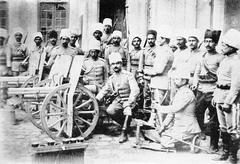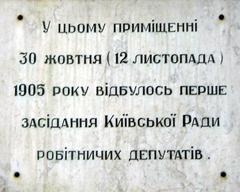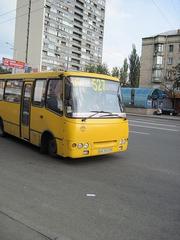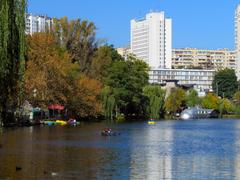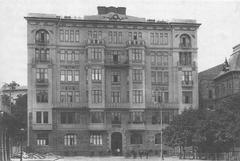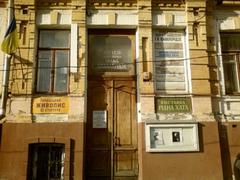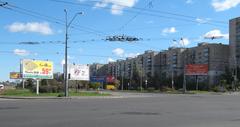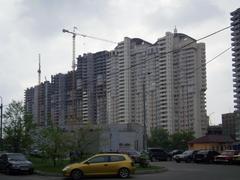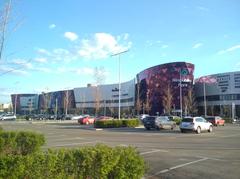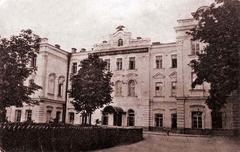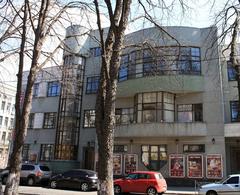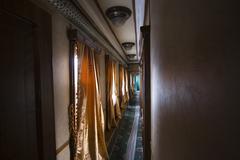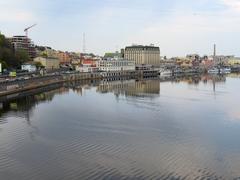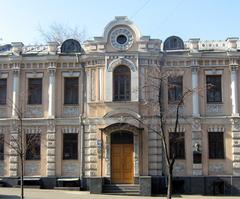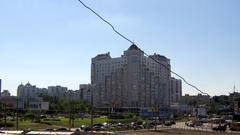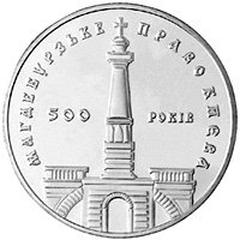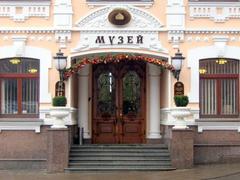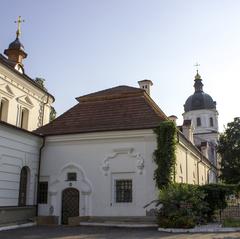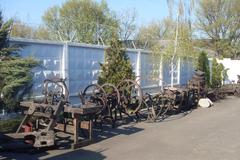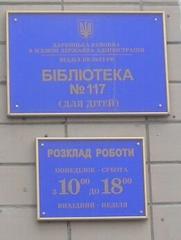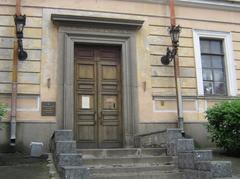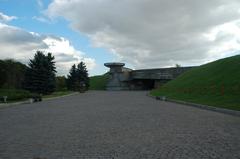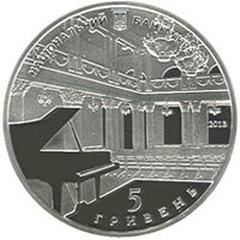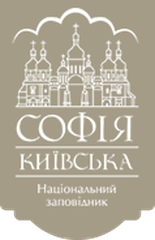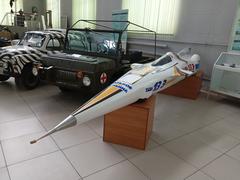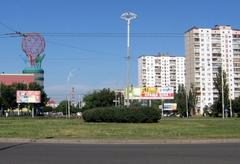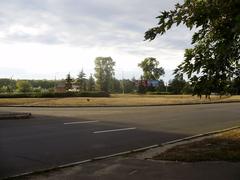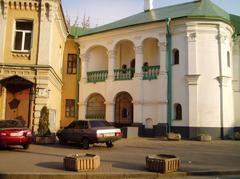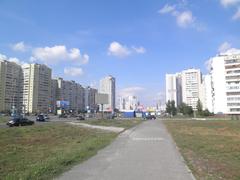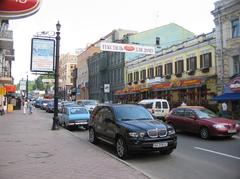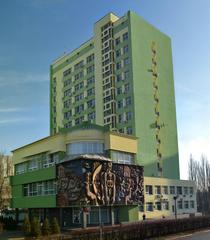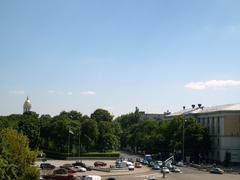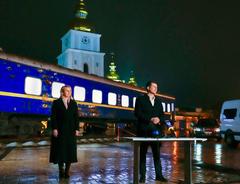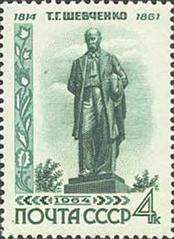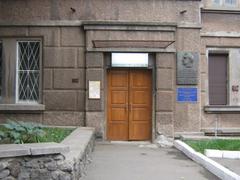Osokorky, Kyiv, Ukraine: Visiting Hours, Tickets, and Historical Sites Guide
Date: 14/06/2025
Introduction
Osokorky, situated on the scenic left bank of the Dnipro River, is a vibrant and evolving district of Kyiv, Ukraine. Visitors to Osokorky can expect an intriguing fusion of history, modern urban development, and ecological richness. Once a rural village characterized by lush black poplar trees, Osokorky joined Kyiv in 1935. Since then, it has transformed into a desirable residential and cultural destination, its growth propelled by the 1992 launch of the Osokorky Metro Station, which now provides seamless access to the city center (Google Arts & Culture; Wikipedia).
Today, Osokorky balances modern city life—marked by high-rise apartments, bustling shopping centers, and inviting restaurants—with unique ecological areas such as Ecopark Osokorky. This floodplain preserve is one of Kyiv’s last, home to diverse wildlife and a magnet for nature enthusiasts (Rubryka). The Osokorky Metro Station itself is a highlight, featuring the renowned “More Than Us” street art murals, which celebrate Ukrainian resilience and identity (Atlas Obscura).
Whether your interests lie in urban exploration, ecological discovery, or contemporary culture, this comprehensive guide covers Osokorky’s history, visitor information, transportation, accessibility, attractions, and travel tips. Experience a district where Kyiv’s past, present, and future come alive (CEDOS; Ukrayinska Pravda).
Table of Contents
- Discover Osokorky: History, Urban Development, Visitor Information
- Visiting Osokorky Metro Station: Hours, Tickets, and Cultural Highlights
- Ecopark Osokorky: Visiting Hours, Tickets, and Wilderness Guide
- Exploring Osokorky: Travel, Transportation, and Local Amenities
- Summary and Visitor Recommendations
- References
Discover Osokorky: History, Urban Development, Visitor Information
Historical Background
The name “Osokorky” derives from the Ukrainian word for black poplar trees (осокір), which once dominated the landscape. The area’s rural village roots are still visible near the Pivdennyi (Southern) Bridge, serving as a poignant reminder of Osokorky’s history (Google Arts & Culture; Wikipedia).
Urban Development
Osokorky’s transformation accelerated after the opening of its metro station in 1992, which catalyzed new residential towers, retail spaces, and infrastructure. Today, it represents Kyiv’s dynamic post-Soviet urban evolution (CEDOS).
Visitor Essentials
- Accessibility: The district is easily reached via the Syretsko–Pecherska (Green) Metro Line at Osokorky Station. The Pivdennyi Bridge and multiple bus routes enhance connectivity (Wikipedia).
- Visiting Hours: As an open district, parks and green spaces are generally accessible from dawn to dusk, year-round.
- Tickets: No entrance fees are required to explore Osokorky or its parks; some guided tours may have fees.
- Travel Tips: Wear comfortable shoes, check the weather, and consider joining guided walks for insights into Osokorky’s history and ecology.
Attractions & Photographic Spots
Popular spots include the lakes, wetlands, and panoramic views near the Pivdennyi Bridge. Neighboring districts Pozniaky and Kharkivskyi Masyv offer additional dining and leisure options.
Conservation Challenges
Ongoing construction poses threats to green areas. The Ecopark Osokorky Landscape Reserve is central to community conservation efforts (Ukrayinska Pravda).
FAQ
- Is Osokorky a historical monument?
No, it is a district with historical and natural sites, accessible free of charge. - How to reach Osokorky?
Via the Syretsko–Pecherska Metro Line. - Are guided tours available?
Yes, especially focusing on the left bank’s history and nature. - Best time to visit?
Spring to early autumn for outdoor activities.
Visiting Osokorky Metro Station: Hours, Tickets, and Cultural Highlights
Practical Information
- Hours: Daily, ~5:45 AM–12:00 AM.
- Tickets: 8 UAH per ride, with multi-ride and contactless options (Kyiv Metro official site).
- Accessibility: Elevators, ramps, and tactile paving support inclusive access.
Cultural Significance
The “More Than Us” Street Art Project
In 2018, artists from around the world created eight powerful murals in the station, each symbolizing themes ranging from resilience (“Autonomy”, “Motherland”) to unity and knowledge. The project is a landmark of contemporary Ukrainian identity (Atlas Obscura).
Kyiv’s Artistic Metro Tradition
Osokorky joins other Kyiv stations like Arsenalna and Zoloti Vorota in transforming underground spaces into canvases for national heritage and modern narratives (Atlas Obscura).
Community and Impact
The murals were selected with local input, fostering civic pride and making the station a focal point for cultural engagement.
Ecological Context
- Natural Setting: Close to the Dnipro, Osokorky offers access to Trukhaniv Island and left bank parks (Ukrainian Lessons).
- Sustainable Mobility: Modern payment systems and public transport reduce traffic and emissions.
- Green Initiatives: Community clean-ups and riverbank restoration support biodiversity.
Visiting Tips
- Use contactless payment at yellow pay-gates.
- Visit during weekdays for fewer crowds.
- Join guided tours for art and metro history (Atlas Obscura).
- Remember it is an active transit hub.
FAQ
- Opening hours?
~5:45 AM–midnight. - Ticket options?
Single rides, multi-ride, and contactless. - Accessibility?
Elevators and ramps available. - Nearby attractions?
Trukhaniv Island, Pechersk Lavra, city parks.
Ecopark Osokorky: Visiting Hours, Tickets, and Wilderness Guide
Overview
Ecopark Osokorky is a preserved floodplain landscape vital for air quality, flood control, and public health (Rubryka). It features meadows, forests, lakes, and supports a wealth of biodiversity.
Visiting Essentials
- Hours: 6:00 AM–9:00 PM daily.
- Entry: Free.
- Events: Occasional guided tours and community activities; check local NGO pages.
Biodiversity
With over 100 bird species (including migratory flocks), rare plants, lakes (like Lake Tiagle), and floodplain forests, the park is ideal for birdwatching, photography, and gentle adventure.
Recreation
- Birdwatching: Best in spring/autumn.
- Walking and Cycling: Informal trails.
- Picnicking and Photography: Open spaces by the lakes.
- Boating: Bring your own equipment; no rentals onsite.
Conservation and Facilities
- Community Activism: Local NGOs lead clean-ups and educational events.
- Facilities: Minimal—bring food, water, and carry out trash.
- Accessibility: Natural trails may challenge those with mobility issues; some easier access points exist.
Responsible Tourism
- Stay on paths, respect wildlife, and avoid leaving litter.
- Park is safest in daylight; waterproof shoes recommended when rainy.
Ongoing Challenges
Despite protection, development pressures persist. Visitors may see advocacy materials near boundaries.
FAQ
- Hours?
6:00 AM–9:00 PM. - Entry fee?
None. - Guided tours?
Offered by NGOs; check online. - Accessibility?
Limited for wheelchairs and strollers.
Exploring Osokorky: Travel, Transportation, and Local Amenities
Getting There
- Metro: Green Line (Osokorky or Slavutych stations) (Rome2Rio).
- Taxi/Rideshare: Uber, Bolt, Uklon; fares 120–200 UAH (Travellikeaboss).
- Car: ~15–25 minutes from city center; parking can be limited.
- Buses/Marshrutkas: Cheap, but signage is mostly in Ukrainian.
Accessibility
- Metro: Escalators and some elevators, tactile paving, but incomplete wheelchair access.
- District: Sidewalks are wide but curb ramps inconsistent; modern venues are typically accessible.
Safety and Health
- Safety: Generally safe and family-friendly; remain vigilant for petty theft in crowded areas (Travellikeaboss).
- Health: 24/7 clinics and pharmacies; emergency number 112.
Practical Tips
- Currency: Hryvnia (UAH); ATMs widely available (Bucketlistly).
- Connectivity: Excellent mobile/internet; SIM cards widely sold.
- Accommodation: Hostels to mid-range hotels (from 500 UAH/night).
- Dining: Ukrainian and international options; meals 200–400 UAH.
- Etiquette: Ukrainian is official language; English common among youth; 10% tip customary.
Local Life
Modern high-rises, shopping centers, and the Pivdennyi Bridge define Osokorky’s skyline, with remnants of the old village and local markets offering a glimpse into its heritage. Community events and environmental workshops foster a strong neighborhood spirit.
Summary and Visitor Recommendations
Osokorky is a compelling Kyiv district uniting history, contemporary urban life, ecological preservation, and public art. Whether you’re admiring murals in the metro, exploring the Ecopark’s wild meadows, or relaxing in a riverside café, Osokorky provides a well-rounded, authentic Kyiv experience. It is easily accessible, affordable, and welcoming to both locals and international visitors. For a richer visit, consider participating in guided tours, community events, or conservation activities. Stay informed with official resources and download the Audiala app for the latest updates and curated travel insights (Kyiv Metro official site; Ukrayinska Pravda).
References
- Discover Osokorky: History, Urban Development, and Visitor Information, 2024, Google Arts & Culture (Google Arts & Culture)
- Osokorky, Kyiv Wikipedia Page, 2024 (Wikipedia)
- Urban Development and Modern Transformation of Kyiv, 2023, CEDOS (CEDOS)
- Osokorky Ecopark Conservation Efforts, 2024, Ukrayinska Pravda (Ukrayinska Pravda)
- Visiting Osokorky Metro Station and Art Project, 2018, Atlas Obscura (Atlas Obscura)
- Kyiv Metro Official Website, 2025 (Kyiv Metro official site)
- Ecopark Osokorky Urban Nature Guide, 2024, Rubryka (Rubryka)
- Exploring Osokorky: Travel and Safety, 2024, Travellikeaboss (Travellikeaboss)
- Additional travel and neighborhood insights: Rome2Rio, Bucketlistly
